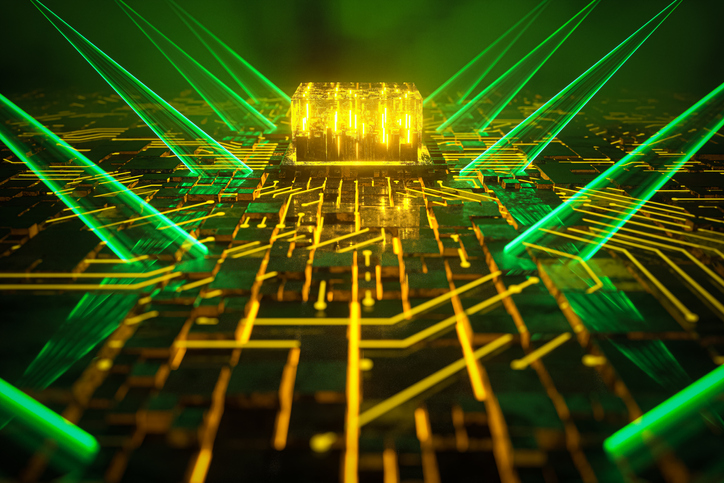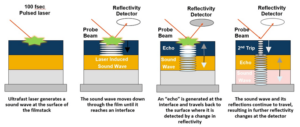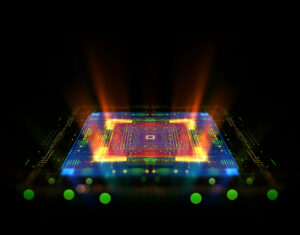
A technical paper titled “WWW: What, When, Where to Compute-in-Memory” was published by researchers at Purdue University.
Abstract:
“Compute-in-memory (CiM) has emerged as a compelling solution to alleviate high data movement costs in von Neumann machines. CiM can perform massively parallel general matrix multiplication (GEMM) operations in memory, the dominant computation in Machine Learning (ML) inference. However, re-purposing memory for compute poses key questions on 1) What type of CiM to use: Given a multitude of analog and digital CiMs, determining their suitability from systems perspective is needed. 2) When to use CiM: ML inference includes workloads with a variety of memory and compute requirements, making it difficult to identify when CiM is more beneficial than standard processing cores. 3) Where to integrate CiM: Each memory level has different bandwidth and capacity, that affects the data movement and locality benefits of CiM integration.
In this paper, we explore answers to these questions regarding CiM integration for ML inference acceleration. We use Timeloop-Accelergy for early system-level evaluation of CiM prototypes, including both analog and digital primitives. We integrate CiM into different cache memory levels in an Nvidia A100-like baseline architecture and tailor the dataflow for various ML workloads. Our experiments show CiM architectures improve energy efficiency, achieving up to 0.12x lower energy than the established baseline with INT-8 precision, and upto 4x performance gains with weight interleaving and duplication. The proposed work provides insights into what type of CiM to use, and when and where to optimally integrate it in the cache hierarchy for GEMM acceleration.”
Trovare il documento tecnico qui. Pubblicato a dicembre 2023 (prestampa).
Sharma, Tanvi, Mustafa Ali, Indranil Chakraborty, and Kaushik Roy. “WWW: What, When, Where to Compute-in-Memory.” arXiv preprint arXiv:2312.15896 (2023).
Lettura correlata
Aumento dell'efficienza energetica dell'intelligenza artificiale con il calcolo in memoria
Come elaborare carichi di lavoro zettascale e rimanere entro un budget energetico fisso.
Modellazione del calcolo in memoria con efficienza biologica
L’intelligenza artificiale generativa costringe i produttori di chip a utilizzare le risorse di calcolo in modo più intelligente.
SRAM In AI: The Future Of Memory
Why SRAM is viewed as a critical element in new and traditional compute architectures.
- Distribuzione di contenuti basati su SEO e PR. Ricevi amplificazione oggi.
- PlatoData.Network Generativo verticale Ai. Potenzia te stesso. Accedi qui.
- PlatoAiStream. Intelligenza Web3. Conoscenza amplificata. Accedi qui.
- PlatoneESG. Carbonio, Tecnologia pulita, Energia, Ambiente, Solare, Gestione dei rifiuti. Accedi qui.
- Platone Salute. Intelligence sulle biotecnologie e sulle sperimentazioni cliniche. Accedi qui.
- Fonte: https://semiengineering.com/cim-integration-for-ml-inference-acceleration/
- :ha
- :È
- :Dove
- $ SU
- 1
- 2023
- a
- accelerazione
- il raggiungimento
- AI
- alleviare
- an
- ed
- risposte
- architettura
- AS
- At
- Larghezza di banda
- Linea di base
- benefico
- vantaggi
- entrambi
- budget limitato.
- by
- nascondiglio
- Materiale
- Ultra-Grande
- avvincente
- calcolo
- Calcolare
- Costi
- critico
- dati
- Dicembre
- determinazione
- diverso
- difficile
- digitale
- dominante
- ogni
- Presto
- efficienza
- elemento
- emerse
- energia
- efficienza energetica
- sviluppate
- valutazione
- esperimenti
- esplora
- fisso
- Nel
- Forze
- da
- futuro
- Guadagni
- Generale
- dato
- qui
- gerarchia
- Alta
- Tuttavia
- HTTPS
- identificare
- competenze
- in
- inclusi
- Compreso
- intuizioni
- integrare
- integrazione
- ai miglioramenti
- IT
- jpg
- Le
- apprendimento
- Livello
- livelli
- inferiore
- macchina
- machine learning
- macchine
- Fare
- massicciamente
- Matrice
- Memorie
- ML
- Scopri di più
- movimento
- moltitudine
- di applicazione
- New
- Nvidia
- of
- on
- aprire
- Operazioni
- nostro
- Carta
- Parallel
- eseguire
- performance
- prospettiva
- Platone
- Platone Data Intelligence
- PlatoneDati
- pone
- energia
- Precisione
- processi
- lavorazione
- proposto
- prototipi
- fornisce
- pubblicato
- Domande
- per quanto riguarda
- Requisiti
- ricercatori
- Risorse
- roy
- mostrare attraverso le sue creazioni
- soluzione
- Standard
- soggiorno
- convenienza
- SISTEMI DI TRATTAMENTO
- Consulenza
- di
- che
- Il
- Il futuro
- loro
- Strumenti Bowman per analizzare le seguenti finiture:
- questo
- titolato
- a
- tradizionale
- Digitare
- Università
- uso
- varietà
- vario
- visti
- di
- Prima
- we
- peso
- Che
- quando
- con
- entro
- Lavora
- zefiro












